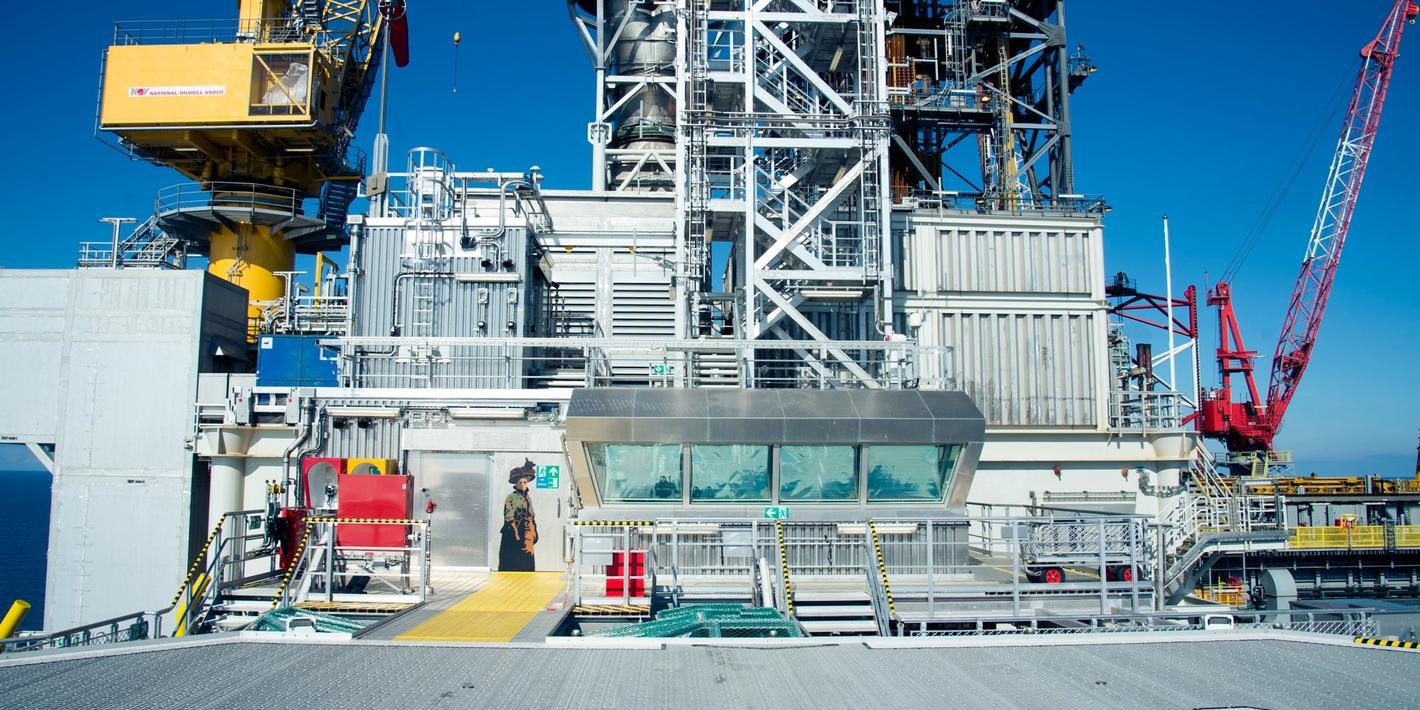About the Gina Krog field
Gina Krog is located about 30 kilometres northwest of Sleipner, and came on stream in June 2017.

Gina Krog is located about 30 kilometres northwest of Sleipner, and came on stream in June 2017.
As of September 2023, Gina Krog has fully electrified by power from shore via the Johan Sverdrup field.
The electrification of Gina Krog was part of an overall decision that phase two of the Johan Sverdrup development, in addition to electrification of the Johan Sverdrup field itself, also should include solutions for Gina Krog, Edvard Grieg and Ivar Aasen, and partial operation with power from shore for Sleipner.
Oil production on Gina Krog is declining, and to keep the production as high as possible, gas lift is used in some of the wells. In addition, two injection wells have been converted to producers. The strategy is to keep the gas production at plateau while at the same time maximising oil production. The second drilling campaign on Gina Krog started in June 2023 with two new wells, one with an exploration target. A PDO for the subsea tie-back of the discovery 15/5-2 Eirin was delivered in September 2023. The alternative oil export solution, which includes a pipeline from Gina Krog to the Sleipner A platform, is planned to be in operation in 2024.*
In 2020, Aivel were awarded the EPCIC contract (Engineering, Procurement, Construction, Installation and Completion) for electrification of Gina Krog, as a part of the overall area solution for the Utsira High.
The assignment involved carrying out modifications to prepare Gina Krog for operation with environmental-friendly electricity from the onshore power plant at Haugsneset.
* Source: Norsk Petroleum

Electrification is now happening all over society, whether it involves switching from fossil fuel-powered cars to electric cars, or electrifying power-intensive industrial processes powered by gas.
We commenced production from the Gina Krog oil and gas field in the North Sea on June 30 2017. The Gina Krog platform is tied in to Sleipner A and uses processing capacity on the platform and existing pipelines for sending the gas to the marked in Europe.
Gina Krog (previously Dagny), originally a minor gas discovery just north of Sleipner, is a field that has been considered for development on a number of occasions since it was first discovered in 1974. Gina Krog is a global project with substantial Norwegian deliveries. For example, the the living quarters have been built at Stord, more than half of the equipment packages come from Norway, and all drilling and well services are performed by Norwegian suppliers.
The field will be operated from Equinor’s Stavanger offices, while helicopter and base services will be run from Sola and Dusavika.
When oil and gas were proven in the neighbouring structure Gina Krog Øst (previously Dagny) in 2007, the Gina Krog landscape was reviewed again. Further delineation during the period 2008 to 2011 determined contact between Gina Krog and Gina Krog Øst and confirmed substantial volumes of oil under the entire structure.
The development of Gina Krog illustrates the importance of exploring and developing in mature areas with established infrastructure. It will be among our larger new developments with an estimated 225 million barrels of oil and gas, and help extend the lifetime and exploit available capacity on nearby Sleipner for many years to come.
Gas was proven in the Gina Krog (previously Dagny) discovery as far back as in the 1970s, just north of the Sleipner Vest field in the central part of the North Sea. In 2007, gas, condensate and oil were discovered in the Ermintrude prospect. Appraisal wells drilled on Gina Krog from 2008 to 2011 proved an oil column under the gas.
The Gina Krog partners submitted a Plan for Development and Operation (PDO) in December 2012. An impact assessment was submitted for consultation in October 2012.
Gina Krog is developed with a platform resting on the seabed, while the wells are drilled by a mobile jack-up drilling rig. The liquid is transported by tanker, and the gas via the Sleipner field.
The Dagny field was renamed Gina Krog in March 2013.